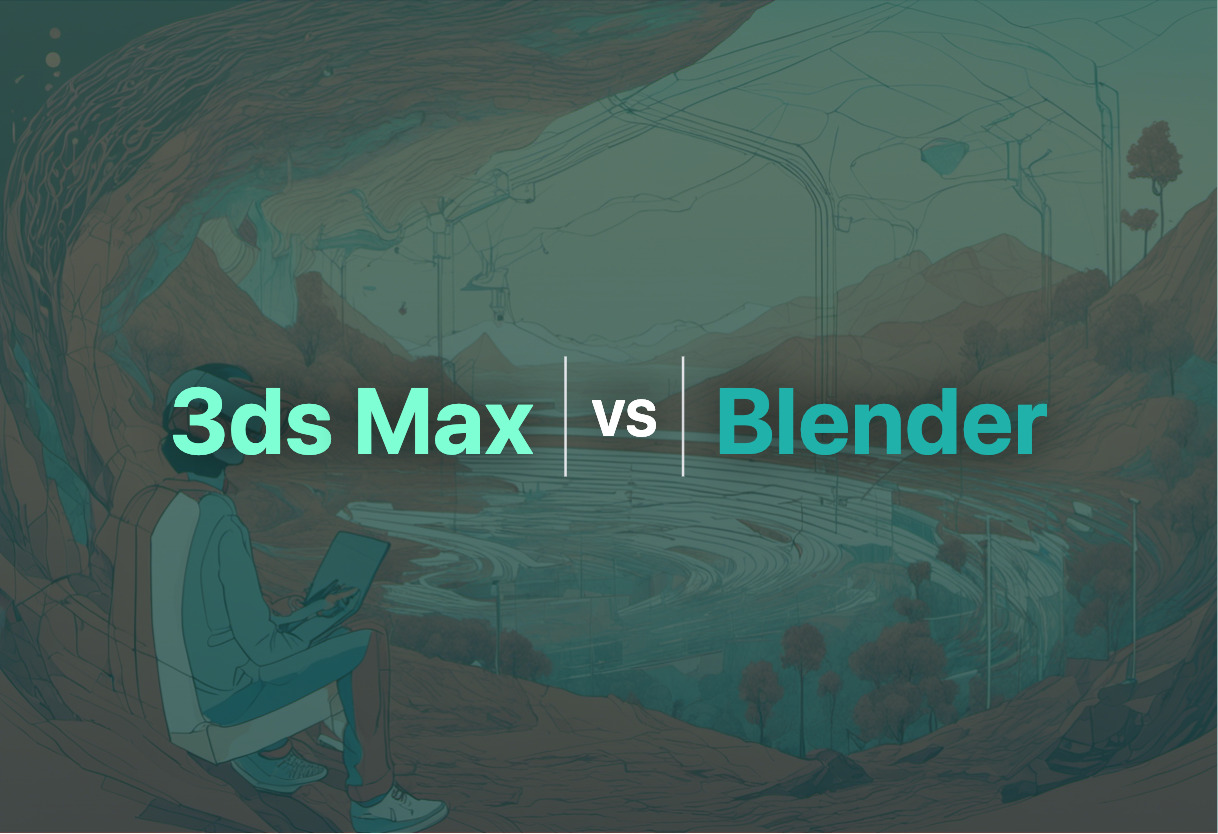For seasoned professionals working on high-scale projects such as films, games, and architectural renders, 3ds Max triumphs with its advanced toolset, plugins, and robust modularity. For hobbyists or budget-conscious creators, Blender, with its powerful suite of tools and open-source nature, proves a reliable alternative.

Key Differences Between 3ds Max and Blender
- Ownership: 3ds Max is developed by Autodesk Media & Entertainment, an established software company, while Blender is an open-source project managed by the Blender Foundation.
- Cost: 3ds Max is priced based on a subscription model, while being open-source makes Blender free for use by all.
- Compatibility: 3ds Max is compatible primarily with Windows 10 and 11, whereas Blender can run on Linux, macOS, Windows, BSD, and Haiku.
- Support: Blender benefits from a vibrant community-driven support system, whereas 3ds Max has professional-grade customer service.
- Plugins: 3ds Max offers a flexible plugin architecture which often needs to be purchased, whereas Blender’s functionalities are mostly built-in.
- Usability: 3ds Max is arguably more user-friendly with its diverse toolsets and predefined options, while Blender demands some coding/technical knowledge for full functionality.
| Comparison | Autodesk 3ds Max | Blender |
|---|---|---|
| Original Developer | Yost Group | NeoGeo |
| Current Developer | Autodesk Media & Entertainment | Blender Institute |
| Initial Release | DOS version by Yost Group | January 2, 1994 |
| Usage | 3D animations, models, games, images | Animated films, visual effects, art, 3D-printed models, motion graphics, interactive 3D applications, virtual reality |
| Pricing | Pay-as-you-go tokens and paid plugins | Free and open-source |
| Scripting Language | MAXScript | C, C++, Python |
| Mapping & Texturing | Supports creative texture and planar mapping | Features UV mapping and texturing |
| Animation Tools | All animation tools including expressions, scripts, list controllers, wiring etc. | Rigging and skinning, animation, match moving, motion graphics |
| Simulation Capabilities | Integrated cloth solver for cloth simulations | Fluid, smoke, particle, soft body simulation |
| Import/Export File Formats | .dwg | Alembic, 3DS, FBX, DXF, SVG, STL, UDIM, USD, VRML, WebM, X3D, OBJ |
| Supported Platforms | Windows | Linux, macOS, Windows, BSD, Haiku |
| Community Support | Sufficient support with frequent updates | Extensive community support |
What Is Autodesk 3ds Max and Who’s It For?
Autodesk 3ds Max, formerly known as 3D Studio and 3D Studio Max, stands out as a cutting-edge software for creating top-tier 3D animations, models, games, and images. With versatile modeling capabilities, flexible plugin architecture, and integral features, it’s singularly suited to the rigorous demands of video game developers, film industry professionals, and architects looking to deliver vivid, pre-rendered presentations.
From Windows platform enthusiasts to architectural enthusiasts, the software delivers unparalleled quality. It’s been integrated into educational programs across all levels, making it an indispensable tool in the arsenal of budding 3D designers and rendering professionals.

Pros of Autodesk 3ds Max
- Leverages MAXScript, a built-in scripting language
- Flexible and creative texture mapping options
- Supports complex skeletal deformation adjustments
- Provides high compatibility with Windows 10 and Windows 11
Cons of Autodesk 3ds Max
- Usage involves pay-as-you-go tokens
- Specialized plugins available for separate purchase
- Highest compatibility limited to Windows 10 and Windows 11
What Is Blender and Who’s It For?
Blender constitutes an open-source 3D computer graphics software toolset, initially exploited by NeoGeo animation studio and currently developed by an active community. Engineered for creating animated films, visual effects, art, 3D-printed models, VR applications and a lot more, it provides a comprehensive suite of features from 3D modelling, animation, rendering to video editing and compositing.
Its versatility and robust set of features make Blender suitable for a wide range of users, from artists and animators to game developers and film industry professionals. It’s also an excellent tool for students and hobbyists looking to hone their 3D modeling skills without the financial burden of proprietary software.

Pros of Blender
- Completely free and open source
- Offers a wide range of 3D graphics capabilities
- Includes interoperability with commonly used 3D file formats
- Available in 36 languages
Cons of Blender
- Blender Game Engine was deprecated in release 2.8
- Blender Internal was removed in release 2.8, favoring Eevee renderer
3ds Max vs Blender: Pricing
3ds Max offers a pay-as-you-go model and separately purchasable plugins, while Blender is open-source and free to use.
3ds Max
Autodesk 3ds Max uses a pay-as-you-go model, granting accessibility to its tokens which are required for usage. Additional functionality can be integrated through specialized plugins that are available for purchase separately.
Blender
Known as a free and open-source software, Blender exempts its users from any licensing costs and provides comprehensive access to its toolsets without any hidden or additional charges.
The Final Word: Autodesk 3ds Max or Blender?
Whether Autodesk’s 3ds Max is superior or Blender comes out on top depends on your needs, but let’s break it down for different user profiles.
Game Developers
Choose 3ds Max if gaming development is your realm. Its advanced modeling capabilities and flexible plugin architecture, combined with a widespread use in the gaming industry edge out Blender. 3ds Max also offers high compatibility with Windows platforms, the most dominant OS in the gaming world.

Visual Effects Artists
For those in the world of VFX, Blender might be your best bet. Its extensive suite of visual effects tools especially for fluid and smoke simulation and features for digital drawing give it an upper hand. Not to mention, it’s open-source and constantly benefiting from community development.

Educational Use
For educators and students, 3ds Max holds an advantage. It’s widely recognized and utilized in scholastic programs. Coupled with Autodesk’s assets management via Autodesk Vault, it makes collaboration and learning more streamlined.

Multiplatform Users
If you’re operating on a system other than Windows, it’s a no-brainer. Blender supports Linux, macOS, Windows, BSD, and Haiku. Its multi-platform capability makes it a superior choice for non-Windows users.

Make your choice based on utility: 3ds Max for game development and education; Blender for visual effects and multi-platform use. Tread this guide as your precise map in the 3ds Max vs Blender territory.
Grant Sullivan
Content writer @ Aircada and self proclaimed board game strategist by day, AI developer by night.





